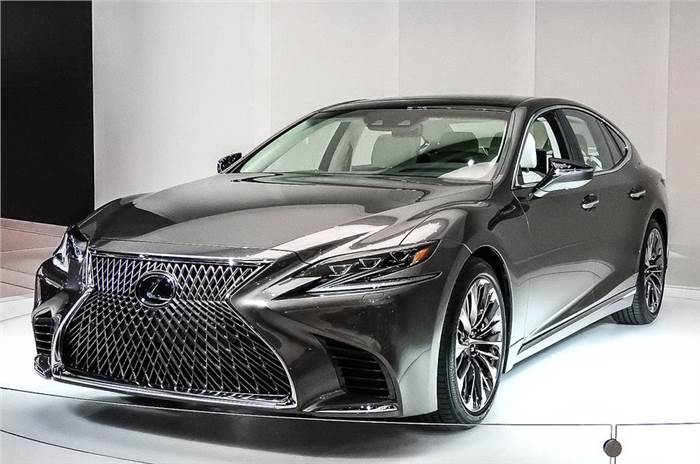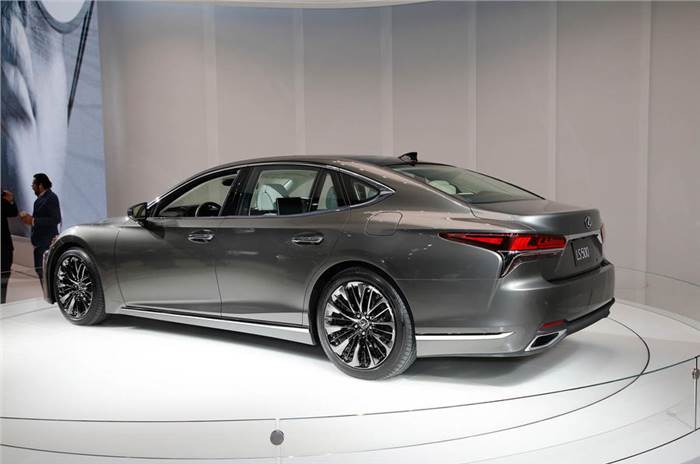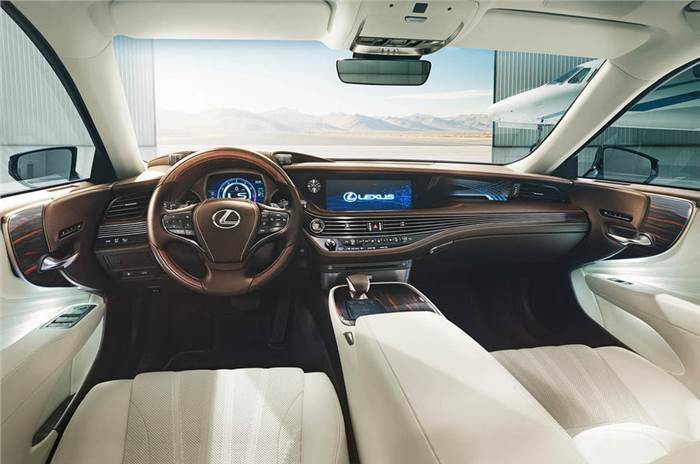The new fifth-gen Lexus LS premium luxury sedan has been unveiled at the Detroit auto show 2017. A rival to the Mercedes-Benz S-class, the LS is based upon a version of the GA-L platform which underpins the well-received LC 500. In the LS, however, the wheelbase has been extended from 2,870mm to 3,125mm.
The new Lexus LS is 5,235mm long, 1,450mm high and 1,900mm wide. Compared to the current LS, the new model sits about 15mm lower, while the bonnet and boot are 30mm and 41mm lower respectively, with Lexus’s designers striving for a ‘four-door coupé’ silhouette.
Lexus has put an emphasis on driver engagement. It claims the LS is endowed with “precise handling and direct steering” thanks to its lighter platform, a new engine mounted lower in the car’s nose, and enhanced body rigidity.
A new 3.5-litre, twin-turbocharged V6 engine “with the performance of rivals’ V8 engines” has been developed for the LS. It produces maximum power of 415hp and 599Nm of torque, channelled through a ten-speed torque-converter automatic transmission. The rear-wheel-drive LS is capable of accelerating from 0-100kph in 4.5sec; Lexus hasn’t revealed the performance of the four-wheel-drive variant.
The Japanese manufacturer’s engineers have made a 90kg weight saving over the outgoing LS and have developed a more rigid multi-link suspension system, with air suspension also available as an option. The air suspension system comes with an ‘access’ function that raises the vehicle and opens the seat bolsters to allow easier ingress.
The LS is equipped with what Lexus calls Vehicle Dynamics Integrated Management (VDIM), a system that oversees control of braking, steering, powertrain and suspension to control and suppress body movement. Handling can be further enhanced by active stabiliser bars and the Lexus Dynamic Handling (LDH) system with independent front and rear steering.
As befits a luxury saloon, the new Lexus LS is packed with assistance, comfort and technology features. The drivers’ seat is adjustable in 28 ways, while the rear seats are heated and powered, and both sets of chairs have optional heating, cooling and massage functions. New sound suppression methods, such as an active noise control system which cancels out engine noise, mean it is the quietest LS yet inside the cabin.
Among the key new safety features is a pedestrian detection system that can automatically brake and potentially steer around the person while staying in the lane.
Lexus will restrict the new LS range to a single four-door body shape, resisting from launching a luxury two-door coupe to compete with the S-class two-door.
“We have RC and LC – for us that’s a lot of sport coupés. Working them through and into the line-up will be sufficient,” said Karl Schlicht, Toyota Motor Europe’s product marketing boss.
For India, Lexus is set to launch, in the coming months, a three-model line-up consisting of one sedan and two SUVs. Crowning the India line-up will be the LX seven-seater SUV, Lexus’ equivalent of the Toyota Land Cruiser, available as both a petrol and diesel. At the opposite end of the range will sit the entry level ES sedan, the carmaker’s only sedan in the country for the time being. The model will solely be available as a hybrid. The third model available will be the RX SUV which will also be available only as a hybrid.





Comments
Member Login
Personal Details
No comments yet. Be the first to comment.